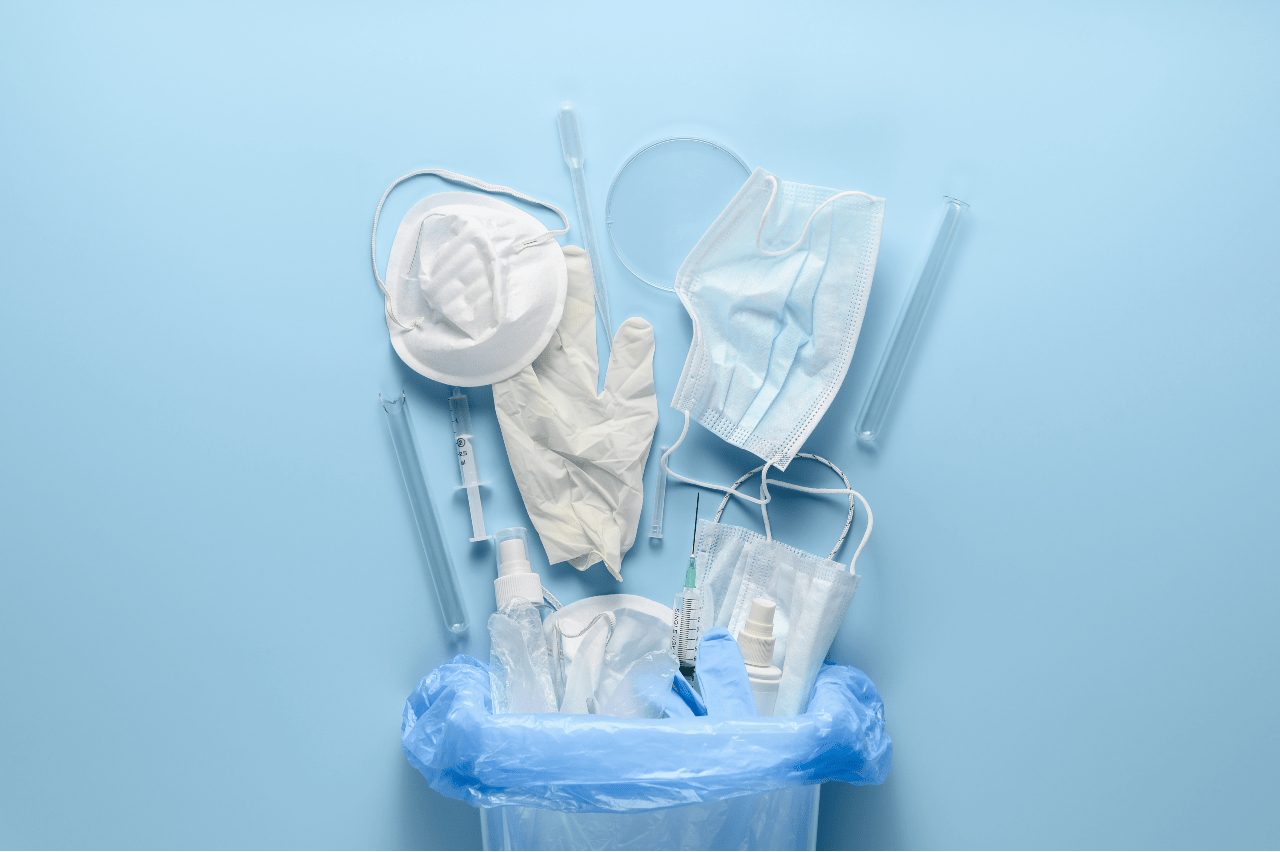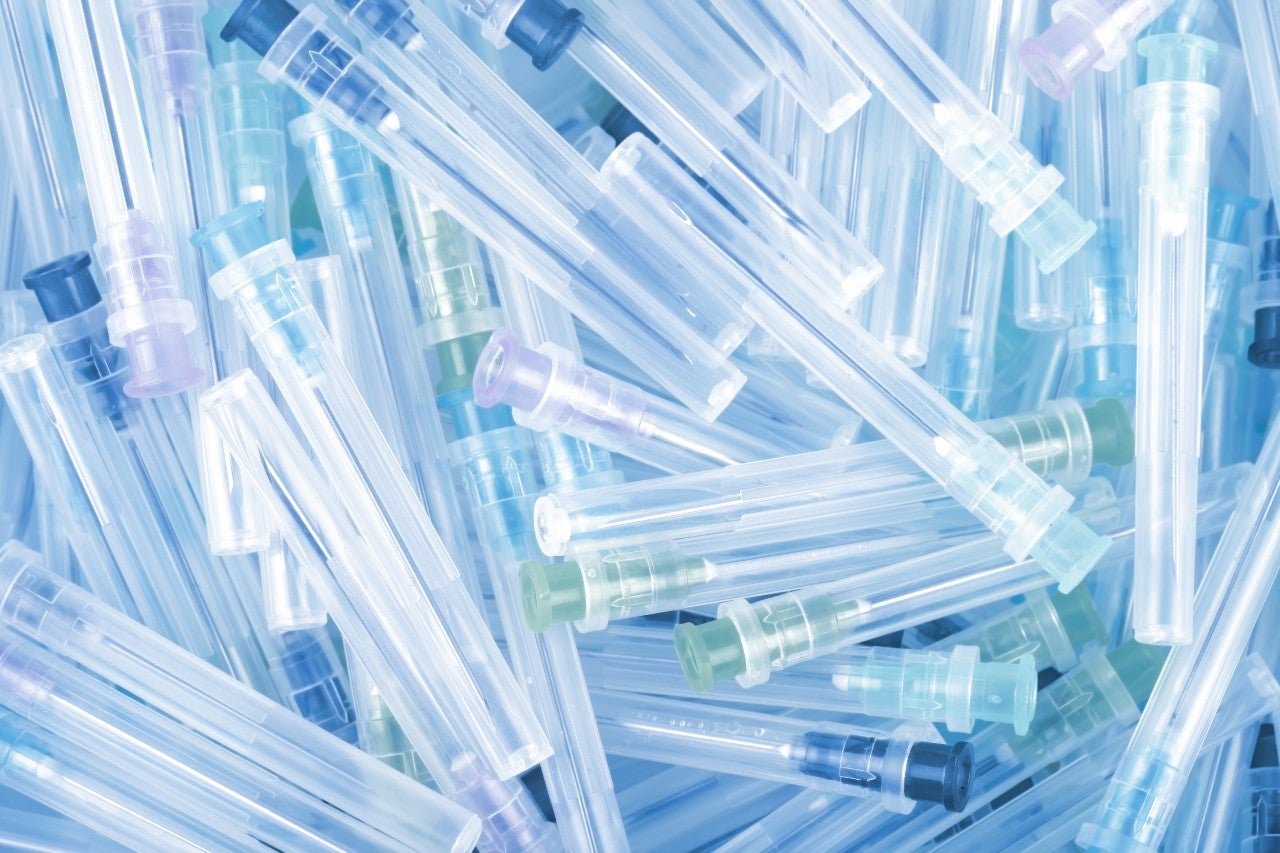
The health sector is responsible for an estimated 4.4% of global greenhouse gas emissions – the vast majority of which originate in the supply chain. One of the easiest ways to start addressing that is for OEMs to focus on recycling and reusing materials, as the first comprehensive life cycle assessment of reprocessed versus disposed ‘single-use’ devices makes clear. How can OEMs weigh up the pros and cons of recycling and reprocessing, and use this insight to make their own work more sustainable? Monica Karpinski finds out.
In the US, healthcare facilities generate an estimated 14,000t of waste per day, according to the Healthcare Plastics Recycling Council (HPRC). Most of this is disposed of in landfills or via incineration, releasing pollutants that are actually harmful to human health.
This also contributes to the global healthcare sector’s climate change footprint, which, as calculated by Healthcare without Harm and Arup, accounts for 4.4% of net greenhouse gas emissions.
The vast majority of medical waste is produced through the disposal of single use devices. Officially, SUDs are designated for use on one patient during a single procedure, and some regulators explicitly advise against resterilising and reusing them – even on the same patient.
There is a clear argument for patient safety here, and perhaps also one for convenience. A discarded device won’t infect a patient it’s not used on; clinicians simply need to throw it out after use and reach for a new one.
However, many SUDs can be recycled and reused safely, and doing so holds significant environmental benefit.
For a device to be recyclable, it must be non-contaminated and contain materials that can be handled by an available facility.
A key opportunity here is plastic: currently, it is estimated by the HPRC that 20–25% of hospital waste is due to plastic packaging and products, 85% of which is free from contamination.
Some devices can be cleaned and resterilised before being used again, in a procedure known as reprocessing. Requirements for reprocessing differ depending on where you live.
In the US, a device must first be cleared for reprocessing by the FDA during its pre-market submission, in which the manufacturer must include additional validation data showing that the device will be as safe and effective as the original once reprocessed.
A recent study published in Sustainability, ‘Combining Life Cycle Assessment and Circularity Assessment to Analyze Environmental Impacts of the Medical Remanufacturing of Electrophysiology Catheters’, shows that the carbon footprint created from just one aspect of the production process – producing and processing plastic – for a newly-manufactured electrophysiology catheter was greater than that of the entire remanufacturing process for an equivalent device.
Compared with virgin manufacturing, reprocessing was found to reduce the global warming impact by 50.4% and lowered overall use of resources by 28.8%.
This study is the first comprehensive life cycle assessment (LCA) of reprocessed devices versus those disposed of after a single use and applies a circularity metric – a measure of how resource input and value is retained, and waste minimised within a closed loop system – alongside commonly-used LCA modelling approaches to indicate a product’s environmental impact.
For OEMs, this kind of circular thinking can offer a more thorough insight into a product’s environmental impact and potential for reuse, which can then inform materials and design decisions.
Importance of recycling for OEMs
Whether or not a product is suitable for recycling depends in large part on its material make-up and complexity, says Robert Render, sustainability business development manager at Ravago Recycling.
A device is likely to be recycled if there is enough material in it that can be recovered via available recycling processes and the value of the recovered material is greater than the cost of processing.
Recycling a device such as a syringe, which is mostly polypropylene, is fairly straightforward – the aim is simply to recover the polypropylene, a valuable material that can be retrieved via a process of density separation.
However, when dealing with a device made from a mixture of materials, it may not be possible or worthwhile to target a single material, making it harder to justify the cost and time needed to process it.

Although sometimes the energy requirements for processing outweigh the benefits of recycling a device, executive director of the HPRC Peylina Chu points out that plastic needs to be evaluated differently.
“When you look at the refining of crude oil to create plastics, there is no situation where recycled plastics are less environmentally friendly than refining and creating virgin plastics,” she says.
As such, if a plastic device isn’t recycled, then it could be because its recyclable materials aren’t considered valuable enough.
The HPRC offers design and materials advice to OEMs interested in improving the recyclability of their products. For healthcare plastics, these include designing with mono-materials whenever possible and using materials that are easily separated during automated recycling processes.
It’s also important for OEMs to consider the recyclability of the packaging their devices are delivered in. “Packaging is what we consider the low-hanging fruit in terms of plastics recycling, because the hospitals can collect that packaging material before it even has any contact with patients,” says Chu.
Reprocess devices for reuse
Reprocessed medical devices can be understood as similar to generic drugs – equivalent from a safety and efficacy standpoint, but at a fraction of the cost of creating a virgin product, says Daniel Vukelich, CEO of the Association of Medical Device Reprocessors (AMDR).
Materials and design considerations influence whether a device is suitable for reprocessing, but this is ultimately determined by a regulator: a reprocessed device must be demonstrably as safe and perform as well as the original.
Most SUDs that are reprocessed are medium-complexity and medium or high-criticality devices, such as catheters and surgical staplers that are materially rugged enough to survive the process of sterilisation or disinfection.
More expensive devices are also usually better candidates. “You wouldn’t reprocess a needle,” says Vukelich, “but you would reprocess an advanced surgical device.” The costs involved in getting FDA clearance for reprocessing, which may require R&D investment, are an important factor here.
Whether and how many times a device can be reprocessed is currently determined on a device-by-device basis, but in future, it would be useful to have broader industry guidelines on reprocessing, says lead author of the Sustainability study Anna Schulte, of the Fraunhofer Institute for Environmental, Safety, and Energy Technology.
For now, more research into the life cycle and circularity of different devices is needed. Vukelich estimates that there are currently around 300 different devices that have been cleared by the FDA and EU for reprocessing.
In the US, medical reprocessing companies – third parties who reprocess devices for hospitals – save 4.6 million devices per year from landfill or incineration, amounting to approximately 935t of medical waste according to a report from Resources, Conservation, and Recycling.
What if a device must be single use?
Sometimes, a device must be designed in a certain way for a certain use, meaning there is no choice but to dispose of it afterwards. If this is the case and the device is made of plastic, Render recommends working with a legal and well-designed landfill rather than sending the devices for incineration.
“There is a broad misunderstanding that putting plastics in a landfill is bad because they don’t degrade. But actually, it’s better if they don’t degrade,” he says.
“When plastics degrade [in an incinerator] they release methane, and if you don’t collect the methane properly, that’s a greenhouse gas that is way worse than CO2.”
It would also be beneficial to choose a landfill that is as close as possible to the point where the device has been generated, to reduce the environmental impact of transport.
The supply chain, including the production, transport, use and disposal of goods, is currently responsible for 71% of the healthcare industry’s greenhouse gas emissions, according to Healthcare without Harm and Arup.
Awareness of the industry’s environmental impact is growing – and so is the willingness to address it. Within the past year, the HPRC has had a 25% increase in membership, while the commercial reprocessing industry is predicted to grow by 15.1% per year from 2020–26, as stated in a report by Global Market Insights. In 2019, it was valued at $1.4bn.
This speaks to a wider shift in thinking, away from the linear ‘take, make, waste’ mentality towards a focus on retaining value and usability for as long as possible.
“How many cuts can umbilical cord scissors make, if it says ‘single use’?” asks Vukelich. “Does that mean one cut or three? If you can repurpose a product safely, it can make 30 cuts for different patients.”
This article first appeared in Medical Device Developments Vol. 1 2021. The full publication can be viewed online here.






